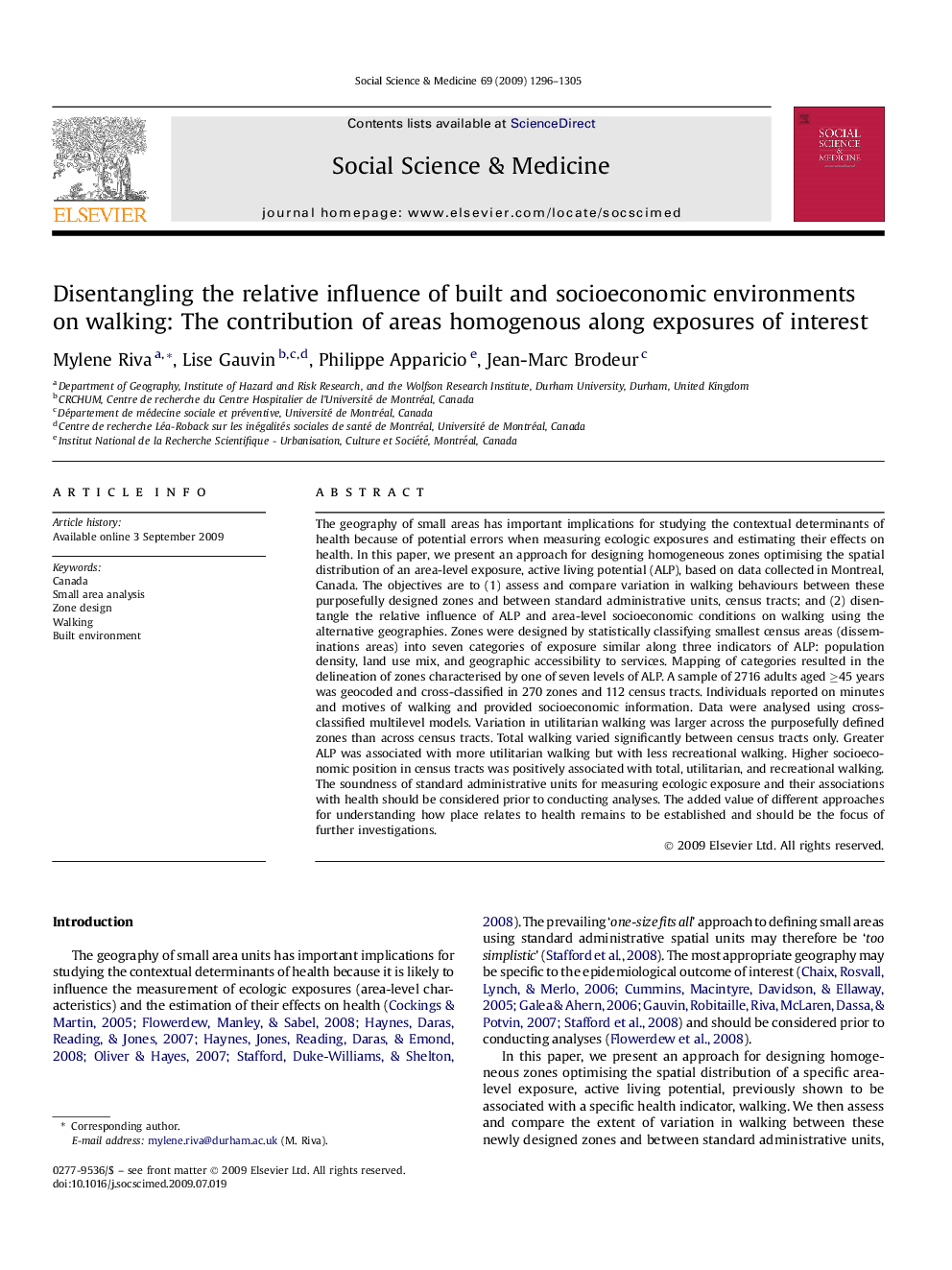| Article ID | Journal | Published Year | Pages | File Type |
|---|---|---|---|---|
| 953226 | Social Science & Medicine | 2009 | 10 Pages |
The geography of small areas has important implications for studying the contextual determinants of health because of potential errors when measuring ecologic exposures and estimating their effects on health. In this paper, we present an approach for designing homogeneous zones optimising the spatial distribution of an area-level exposure, active living potential (ALP), based on data collected in Montreal, Canada. The objectives are to (1) assess and compare variation in walking behaviours between these purposefully designed zones and between standard administrative units, census tracts; and (2) disentangle the relative influence of ALP and area-level socioeconomic conditions on walking using the alternative geographies. Zones were designed by statistically classifying smallest census areas (disseminations areas) into seven categories of exposure similar along three indicators of ALP: population density, land use mix, and geographic accessibility to services. Mapping of categories resulted in the delineation of zones characterised by one of seven levels of ALP. A sample of 2716 adults aged ≥45 years was geocoded and cross-classified in 270 zones and 112 census tracts. Individuals reported on minutes and motives of walking and provided socioeconomic information. Data were analysed using cross-classified multilevel models. Variation in utilitarian walking was larger across the purposefully defined zones than across census tracts. Total walking varied significantly between census tracts only. Greater ALP was associated with more utilitarian walking but with less recreational walking. Higher socioeconomic position in census tracts was positively associated with total, utilitarian, and recreational walking. The soundness of standard administrative units for measuring ecologic exposure and their associations with health should be considered prior to conducting analyses. The added value of different approaches for understanding how place relates to health remains to be established and should be the focus of further investigations.
